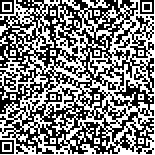下载中心
优秀审稿专家
优秀论文
相关链接
摘要

遥感地表温度产品(LST)对陆面过程和全球与区域气候变化研究具有重要价值。但是当前卫星遥感观测到的地表温度分辨率较粗,多为混合像元,有明显的角度效应和时空变化特征,严重影响陆面过程等研究的应用精度。为定量评估3维异质性场景对亮度温度分布的影响,本文基于再分析资料,耦合3维小气候模型ENVI-met和3维热辐射传输模型RAPID,开展了地表3维温度场的模拟。研究以全球数值预报产品NCEP来提供ENVI-met所需的边界条件,分别进行了异质性植被场景的亮温水平分布和热辐射方向性模拟试验。在水平分布模拟研究中,基于机载G-LiHT数据(光学影像、激光雷达数据、LST产品)提供3维场景构建输入参数和温度场验证数据,并以美国某湿地区域的6个不同异质性场景为例进行了模拟与验证;在热辐射方向性的模拟研究中,基于机载WiDAS多角度多光谱数据构建了3维场景,并以黑河地区的2个异质性场景为例进行了模拟与验证。结果显示:(1)星下点亮温模拟值在水平分布上与G-LiHT的LST亮温值较为接近(标准误差RMSE为1.1 K),说明耦合模型能有效模拟不同空间异质性下的亮温分布。其中,裸土模拟误差最大(2.31 K),两种行播作物方向的模拟误差均小于1.2 K,道路宽度对模拟结果有影响(约为1 K);(2)耦合模型的多角度模拟结果与方向性亮温随视角的变化规律相一致,但变化速率和大小存在着差异。本文的模拟方法可以用于预测卫星过境时刻地表的热辐射方向性。
The Land Surface Temperatures (LSTs) obtained from remote sensing data are of great value for land surface process and climate change research. However, the spatial resolution of retrieved LSTs are relatively coarse, and most of them are mixed pixel. The spatiotemporal variability and angle effects of LSTs limit the accuracy of many scientific studies, including land surface process study. The ENVI-met model is coupled with the RAPID model to quantitatively evaluate the effects of three-dimensional (3D) heterogeneous scenes on brightness temperature and brightness temperature distribution. The key to model coupling is to maintain the consistency of the scene. The component temperature output of the ENVI-met model is used as the component temperature input parameter of the RAPID model. The surface temperature distribution of the 3D scene is simulated on the basis of the reanalysis data. The global numerical forecast product called NCEP is used to provide the boundary conditions required by ENVI-met, and the horizontal temperature distribution and the thermal radiation directionality simulation test of heterogeneous scenes were carried out. In the horizontal distribution simulation study, the onboard G-LiHT data (optical imagery, Lidar data, LST observation) provides 3D scene construction input parameters and temperature field verification data. Six different heterogeneity scenes in a certain wetland area in the United States were taken as examples for the simulation and verification in this study. Moreover, the impact of broadcast direction, road, and spatial heterogeneity on the simulation results were analyzed. In the simulation study of thermal radiation directivity, a three-dimensional scene is constructed on the basis of airborne WiDAS multiangle, multispectral data. Moreover, two heterogeneous scenes in Heihe region are taken as examples for simulation and verification. Results show that the bright temperature value from the vertical observation angle obtained by simulation is close to the LST bright temperature value of G-LiHT (RMSE is 1.1K), indicating that the coupled model can effectively simulate the bright temperature distribution under different spatial heterogeneities. Bare soil simulation error is the largest (2.31K), broadcast direction has minimal effect on the simulation (less than 1.2K), and the road width affects the simulation results (approximately 1 K). The simulation accuracy of the coupled model will decrease with the increase in spatial heterogeneity. The multi-angle simulation results of the coupled model are consistent with the variation of the directional brightness temperature in the WiDAS dataset with the viewing angle, but differences in the rate and magnitude of the change are observed. The simulation method used in this work can be utilized to predict the thermal radiation directionality of the land surface during satellite transit.

